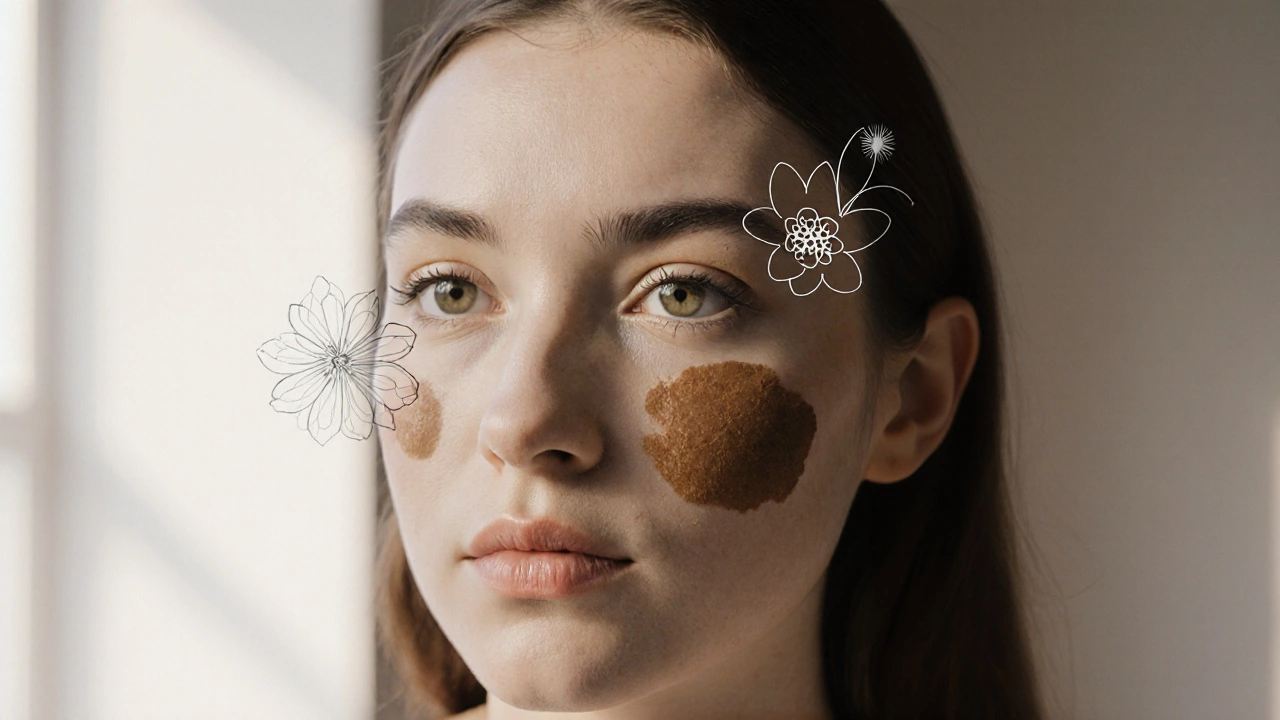Chloasma Tattoos: What They Are and How to Manage Them
When talking about chloasma tattoos, a cosmetic technique that overlays pigment on skin affected by chloasma, a type of facial hyperpigmentation. Also known as pigment‑cover tattoos, it aims to blend discoloration with surrounding skin tone, offering a semi‑permanent camouflage solution.
Chloasma is a hormonal skin condition that shows up as brown or gray patches, most often on the cheeks, forehead or upper lip. It’s triggered by sun exposure, pregnancy, or oral contraceptives, and it’s notoriously stubborn to standard creams. Because the pigment sits deep in the dermis, many people look for alternative ways to mask the patches, and that’s where tattooing comes into play.
Hyperpigmentation, the broader category that includes chloasma, describes any darkening of the skin caused by excess melanin. People often turn to cosmetic camouflage—like makeup, concealers, or dermal pigments—to even out tone. Unlike makeup, a tattoo stays put until it’s removed, so it can be a convenient option for those who want long‑lasting coverage without daily reapplication.
However, tattooing over pigmented skin isn’t risk‑free. Tattoo removal becomes more complicated if the original tattoo was placed on top of a hyperpigmented lesion. Laser‑based removal can sometimes worsen chloasma, causing the dark patches to spread or intensify. Knowing this, many professionals recommend a thorough assessment before any ink is placed.
Laser therapy is often used to treat chloasma itself, aiming to break down excess melanin. When combined with tattoo work, the laser’s effect can be unpredictable—it may fade the tattoo faster than expected or trigger a flare‑up of the underlying discoloration. The key is to choose wavelengths that target melanin without damaging surrounding tissue, a decision usually made by an experienced dermatologist.
Speaking of experts, a consultation with a board‑certified dermatology specialist is essential. Dermatologists can assess the depth and activity of the chloasma, advise on the safest pigments, and outline a realistic aftercare plan. They also coordinate with licensed tattoo artists who understand the nuances of working on pigmented skin, ensuring that the procedure follows medical guidelines.
After the tattoo, proper aftercare can make a big difference. Keep the area clean, avoid direct sun for at least two weeks, and use broad‑spectrum sunscreen daily to prevent the tattoo and chloasma from darkening further. Moisturizing with a gentle, non‑comedogenic lotion helps the skin heal, while a follow‑up visit with your dermatologist can catch any early signs of irritation or pigment changes.
Below you’ll find a curated list of articles that dive deeper into each of these topics—from the science behind chloasma and laser treatments to practical tips on tattoo aftercare and safe removal options. Whether you’re just curious or ready to take the next step, the collection offers clear, actionable information to help you decide if a chloasma tattoo is right for you.
Chloasma and Tattoos: Essential Guide Before You Ink
A practical guide for people with chloasma who want a tattoo, covering risks, preparation, ink choices, aftercare, and when to see a dermatologist.
© 2025. All rights reserved.

